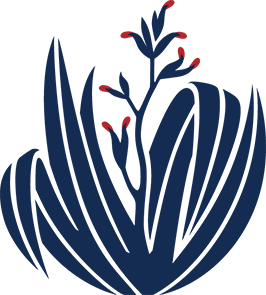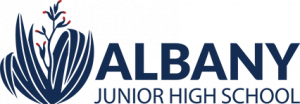Technology
Options
Design and Visual Communication
Visual communication is one of the most universal forms of design. It is at the heart of how our world works; guiding, informing, persuading, and inspiring us everyday.
DVC is a Y9 and 10 elective. In this course students learn a variety of model making, CAD, freehand and instrumental drawing methods. We teach them how to solve problems, consider stakeholders, and think about sustainability as they develop their ideas towards a brief.
This is a popular option as it offers students the opportunity to pursue their own interests through their design ideas. They can personalise their designs and even negotiate their learning through the identification of a need and writing their own brief. This is a fantastic course to take if you are interested in becoming an Architect, Illustrator, Interior, Industrial, Graphic or Product Designer and any other creative endeavour.
Various design briefs that we undertake include cardboard furniture, interiors, sets, bus shelters, celebrity fragrances, packaging, and tiny houses.
Digital Design
This is a cross-disciplinary course that has ties to both the Digital Technology curriculum strand, as well as incorporating some Art and English achievement objectives. This learning is woven organically through the projects students undertake, to help develop their understanding.
- Gain a greater understanding of how to create content using the Adobe creative suite.
- Learn how to communicate ideas visually using the principles of design.
- Gain real world experience and work with clients to develop outcomes.
- Learn how to explain design decisions and justify ideas.
- Develop ways to solve problems independently.
- Learn how copyright affects design considerations.
- Learn how to manage your files and backup content.
Digital Creative Technologies teaches students how to use industry software such as the Adobe suite. It encourages students to experience real world design situations and understand what it is like to work for a client. This course is split into two components; the development of technical skills and project based learning.
Design briefs undertaken in Digital Design include posters, book covers, game graphics, animations, logos, decals, business cards, magazines and yearbook spreads.
Digital Technology
Digital Technology offers a wide range of resources that help students learn to code in several different languages. We begin in Y7 by using simple blocks in code.org to create sprites and learn the basics of loops. This is followed by a short micro:bit practical course that focuses on decision statements and looping. Students also learn how computers work and what the basic PC components are responsible for.
During Y8 we apply the programming skills taught for the micro:bit to Minecraft Education. Students learn to understand coordinates, loops, variables and decision statements in a 3D space. This code can be written in Python, Javascript or blocks.
In Y9 we develop a basic website using HTML & CSS and then design and code an interactive animation or game using Javascript. After these courses are covered, students can choose a digital topic that interests them, ranging from electronics and robotics to game development, 3D image creation, animation, AI, movie making etc.
In Year 10 students learn how to design and create a simple phone app and then move on to add more complex programming constructs such as functions, lists and traversals. We also cover the digital information and Computer Science concepts such as binary, parity, image creation and how the internet works. Once the core curriculum has been completed, students can study a chosen digital project until the end of the semester.
Fabric Technology
The Year 9 and 10 Fabric Technology units are designed to give students a broad understanding of Soft Materials Technology, focusing on the design process and skills attainment. It aims to give students a set of skills that can be applied to materials. These skills can also be transferred to other areas of life.
Students will learn how to:
- Plan and manage their time effectively
- Problem solve
- Work to a design brief and deadline
- Understand the importance of research in the design process
- Communicate ideas through illustration
- Use numeracy skills to measure, draft and adapt patterns
- Evaluate their own and others work to find the best solution to a problem
- Consider and evaluate the ideas of others to help develop their own concepts
- Appreciate the value of care in presentation and finishing of their work
- Use stakeholder feedback to develop design ideas.
It is advisable to complete Year 9 Fabric Technology prior to choosing this option in Year 10.
Design briefs undertaken might include: loungewear design, hoodies, shorts or tracksuit bottoms, fabric dyeing, screen printing and mufti day garment design.
Food Technology
Food Technology is a fun interactive subject where everyone can learn the basics about cooking, food packaging, nutrition, sustainability and safety. It is all about learning new skills and developing knowledge, to help fuel their future.
In Food Technology we delve into the technology cycle by creating innovative appetisers, snacks and meals which we sometimes make for school events. Along the way students will get a taste of what it is like to create a product through trial and testing, whilst going through both the ups and downs of developing a new and unique product.
A wide variety is covered, from nutrition to cultural fusion and gingerbread houses. Students will get their creative juices flowing to develop unique and innovative products, developing a repertoire of skills along the way.
Design briefs undertaken in food technology might include:
- Whipped Cakery collab: Students investigate and develop an original flavour combination for a cookie, bar or cupcake that might be selected to be sold at Whipped Cakery across the road.
- Skills to be a Masterchef: Students learn a range of basic cooking skills and are encouraged to challenge themselves by demonstrating an assortment of abilities to design an appetiser that has never been made before.
- Tramper Snack: In this unit of work students are asked to develop a snack for a tramper with specific dietary needs. We learn about sports nutrition, catering to different dietary requirements, environmentally friendly packaging and of course learn new cooking skills along the way.
- Just Cook: Students kick the year off by making a meal for a family of 5 people for under $15. We look at the NZ Food & Nutrition guidelines to create a meal that meets the needs of an entire family and ensure it is healthy, nutritious and tasty.
- Burger Fusion: Each student creates their own fusion burger (2 cuisines combined into one burger) to meet the needs of their stakeholder – a teacher. We explore food sustainability, specifically looking at how the foods we eat impact the environment, and try to create a burger that is not only delicious but also good for the planet.
- Gingerbread Houses: This is a student favourite! Students design, create and build their own gingerbread house made from only edible products. We make hard candy, model fondant, create blueprints, experiment with raising agents and test the viability of our crazy ideas.
Materials Technology
Students use the design process to research and evaluate existing designs, and through technological practice, go about producing an outcome. During the process they gain an appreciation of aesthetics and functionality as the main principles in their design task.
The manufacture of their prototype incorporates the use of a variety of hand and machine tools with a major emphasis being on the production of a quality outcome. Research, drawing, modelling and experimentation are all used to formulate a successful outcome which is then evaluated for its functionality, aesthetic values and attributes.
Students are exposed to a range of materials, so they can gain an understanding of the different properties and purposes when manipulated, and what is most appropriate to select for purpose.
They must consider:
- Strength
- Weight
- Grain structure
- Appearance
- Ease of manipulation when drilled, filed and/ or cut
Design briefs that might be undertaken in Materials Technology could include, Cajon Drum production, children’s toys, lamps, tools, jewellery and puzzle boxes.



